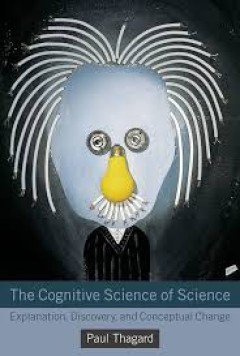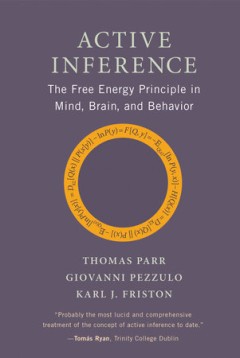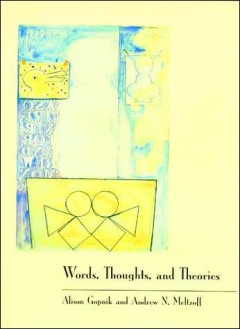Filter by

The Cognitive Science of Science: Explanation, Discovery, and Conceptual Change
A cognitive science perspective on scientific development, drawing on philosophy, psychology, neuroscience, and computational modeling.OCLC-licensed vendor bibliographic record.
- Edition
- -
- ISBN/ISSN
- 0262301725
- Collation
- 1 online resource (xii, 365 pages) :illustrations
- Series Title
- -
- Call Number
- -

From Bricks to Brains the Embodied Cognitive Science of LEGO Robots
From Bricks to Brains introduces embodied cognitive science, and illustrates its foundational ideas through the construction and observation of LEGO Mindstorms robots. Discussing the characteristics that distinguish embodied cognitive science from classical cognitive science, From Bricks to Brains places a renewed emphasis on sensing and acting, the importance of embodiment, the exploration of …
- Edition
- -
- ISBN/ISSN
- 9781897425787.01
- Collation
- -
- Series Title
- -
- Call Number
- 354 pages

Active Inference: The Free Energy Principle in Mind, Brain, and Behavior
Active inference is a way of understanding sentient behavior—a theory that characterizes perception, planning, and action in terms of probabilistic inference. Developed by theoretical neuroscientist Karl Friston over years of groundbreaking research, active inference provides an integrated perspective on brain, cognition, and behavior that is increasingly used across multiple disciplines incl…
- Edition
- -
- ISBN/ISSN
- 9780262369978
- Collation
- -
- Series Title
- -
- Call Number
- -

Words, thoughts, and theories
"A Bradford book."OCLC-licensed vendor bibliographic record.
- Edition
- -
- ISBN/ISSN
- 9780262274098
- Collation
- 1 online resource (xvi, 268 pages).
- Series Title
- -
- Call Number
- -

Mind in nature :Dewey, cognitive science, and a naturalistic philosophy for l…
"A reassessment of the influence of John Dewey's mature work, especially "Experience and Nature" on recent trends in cognitive science"--OCLC-licensed vendor bibliographic record.
- Edition
- -
- ISBN/ISSN
- 9780262373463
- Collation
- 1 online resource
- Series Title
- -
- Call Number
- -

Bots and beasts :what makes machines, animals, and people smart?
"An honest attempt to compare and analyze the intelligence of humans, animals, and computers by an eminent cognitive scientist and long-time Press author"--OCLC-licensed vendor bibliographic record.
- Edition
- -
- ISBN/ISSN
- 0262365898
- Collation
- 1 online resource.
- Series Title
- -
- Call Number
- -

The brain abstracted :simplification in the history and philosophy of neurosc…
"An opinionated history of neuroscience, which argues that--due to the brain's complexity--neuroscientific theories have only captured partial truths, and therefore "neurophilosophy" is unlikely to be achieved"--OCLC-licensed vendor bibliographic record.
- Edition
- -
- ISBN/ISSN
- 9780262378628
- Collation
- 1 online resource
- Series Title
- -
- Call Number
- -

Language in our brain :the origins of a uniquely human capacity
A comprehensive account of the neurobiological basis of language, arguing that species-specific brain differences may be at the root of the human capacity for language.OCLC-licensed vendor bibliographic record.
- Edition
- -
- ISBN/ISSN
- 9780262342964
- Collation
- 1 online resource
- Series Title
- -
- Call Number
- -

Geometry of meaning :semantics based on conceptual spaces
In The Geometry of Meaning, Peter G?ardenfors proposes a theory of semantics that bridges cognitive science and linguistics and shows how theories of cognitive processes, in particular concept formation, can be exploited in a general semantic model. He argues that our minds organize the information involved in communicative acts in a format that can be modeled in geometric or topological terms …
- Edition
- -
- ISBN/ISSN
- 0262319586
- Collation
- 1 online resource (xii, 343 pages) :illustrations
- Series Title
- -
- Call Number
- -

Midbrain mutiny :the picoeconomics and neuroeconomics of disordered gambling …
"A Bradford book."An analysis of how economic theories can be used to understand disordered and pathological gambling that calls on empirical evidence about behavior and the brain and argues that addictive gambling is the basic form of all addiction.OCLC-licensed vendor bibliographic record.
- Edition
- -
- ISBN/ISSN
- 9780262282642
- Collation
- 1 online resource (x, 301 pages) :illustrations
- Series Title
- -
- Call Number
- -
 Computer Science, Information & General Works
Computer Science, Information & General Works  Philosophy & Psychology
Philosophy & Psychology  Religion
Religion  Social Sciences
Social Sciences  Language
Language  Pure Science
Pure Science  Applied Sciences
Applied Sciences  Art & Recreation
Art & Recreation  Literature
Literature  History & Geography
History & Geography